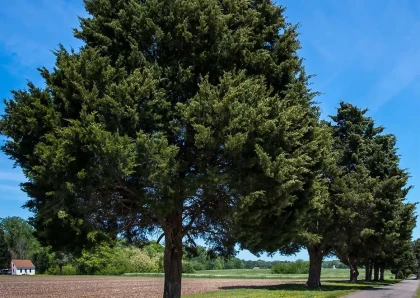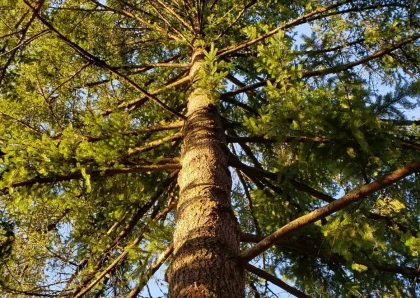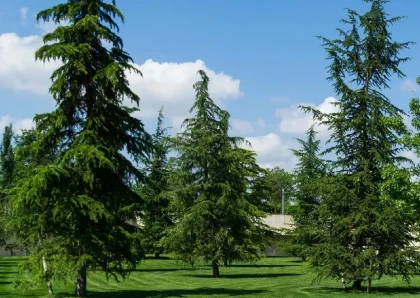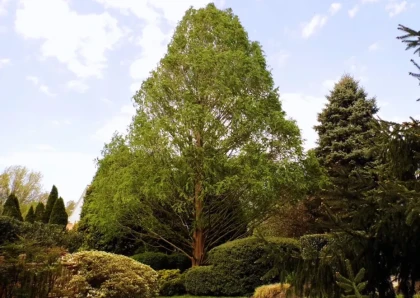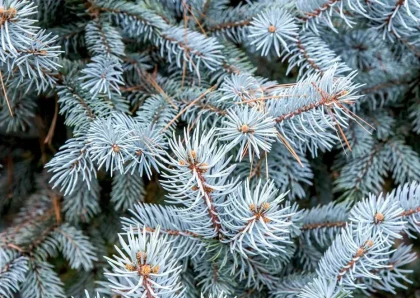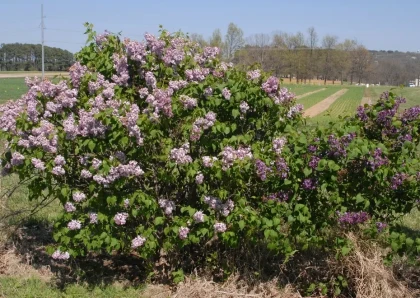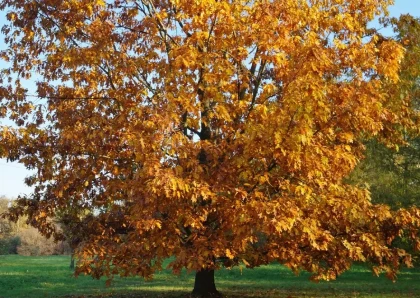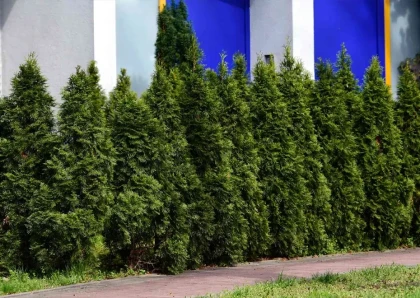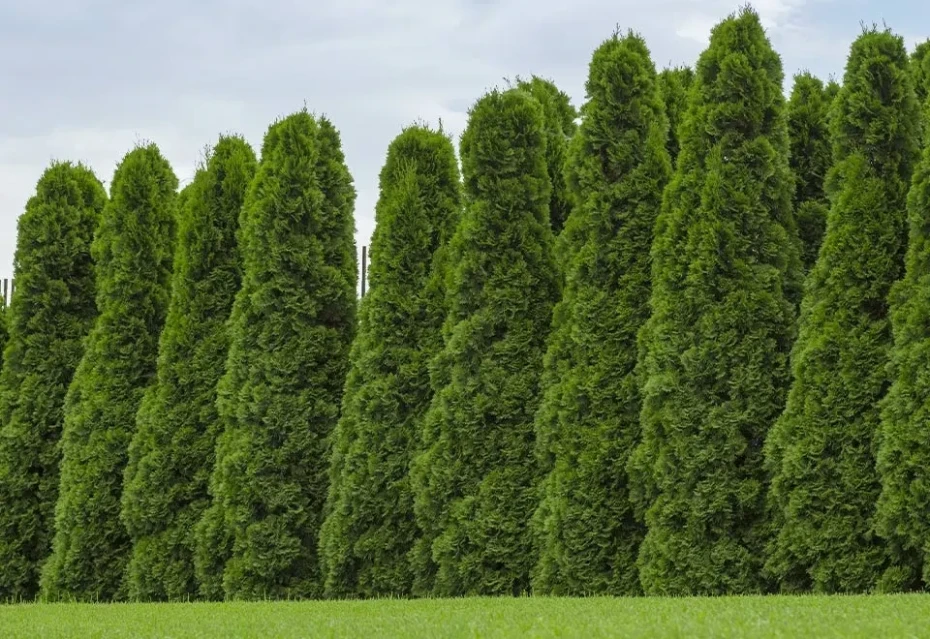
American Arborvitae Tree
Overview
Overview of American Arborvitae Tree
Introduction:
American Arborvitae, known scientifically as Thuja occidentalis, is a popular evergreen tree native to North America. It is a member of the cypress family (Cupressaceae) and is also commonly referred to as Eastern Arborvitae, White Cedar, or Northern White Cedar. This tree is widely cultivated for its attractive appearance, versatility, and ease of maintenance.
Appearance:
American Arborvitae is a medium to large-sized tree that typically reaches a height of 30 to 60 feet (9 to 18 meters) and can spread about 10 to 20 feet (3 to 6 meters) in width. It has a conical to pyramidal shape with dense, scale-like foliage that appears in flattened sprays. The foliage is a vibrant green color, and it retains its color throughout the year, making it an evergreen tree.
Growth Rate:
American Arborvitae has a slow to medium growth rate. While it won't shoot up quickly like some other species, it's known for its longevity and can live for several decades under proper care.
Environmental Adaptability:
This tree is well-adapted to a wide range of environmental conditions. It thrives in full sun to partial shade and can tolerate various soil types, including clay, loam, and sandy soils. American Arborvitae can withstand cold temperatures and is hardy in USDA zones 3 to 7.
Landscape Use:
Due to its attractive appearance and versatility, American Arborvitae is widely used in landscaping. It can be used as a specimen tree in larger yards or as a privacy screen when planted in rows or hedges. It provides year-round greenery and can add an elegant touch to gardens, parks, and other outdoor spaces.
Maintenance:
American Arborvitae is relatively low-maintenance. Once established, it requires minimal care. Regular watering during dry periods and an annual application of balanced fertilizer can help promote healthy growth. Pruning can be done to maintain a desired shape or size, but it's generally not required.
Potential Concerns:
While American Arborvitae is generally a hardy and resilient tree, it can be susceptible to certain pests and diseases. Common issues include bagworms, spider mites, and various fungal infections. Regular inspection and prompt action can help manage these problems effectively.
Varieties:
There are several cultivars of American Arborvitae available, offering various sizes and foliage colors. Some popular cultivars include 'Emerald Green' (compact and narrow), 'Techny' (fast-growing and disease-resistant), and 'Smaragd' (also known as 'Emerald'). Each cultivar has its unique characteristics and can be chosen based on specific landscaping needs.
Types of American Arborvitae Tree
'Emerald Green' (Thuja occidentalis 'Emerald Green')
'Emerald Green' is a popular cultivar of American Arborvitae known for its compact and narrow growth habit. It is an excellent choice for hedges and privacy screens due to its dense foliage and vertical form. The foliage retains its vibrant green color throughout the year.
'Techny' (Thuja occidentalis 'Techny')
'Techny' is a fast-growing and disease-resistant cultivar of American Arborvitae. It has a pyramidal shape and dense foliage, making it suitable for use as a windbreak, privacy screen, or as a specimen tree. It is hardy and can tolerate various soil conditions.
'Smaragd' (Thuja occidentalis 'Smaragd')
'Smaragd,' also known as 'Emerald,' is a compact cultivar of American Arborvitae with a narrow, columnar shape. Its foliage has an attractive emerald green color, and it maintains its form without requiring much pruning. It is an excellent choice for smaller landscapes or as an accent tree.
'Rheingold' (Thuja occidentalis 'Rheingold')
'Rheingold' is a unique cultivar of American Arborvitae with striking foliage. The new growth emerges in a bright golden-yellow color, which gradually changes to a rich bronze hue as it matures. It has a compact, mounding habit and adds a touch of color to the landscape.
'North Pole' (Thuja occidentalis 'Art Boe')
'North Pole' is a tall and narrow cultivar of American Arborvitae, perfect for vertical accents in the landscape. Its slender form and dense foliage make it an excellent choice for tight spaces and as a privacy screen. It maintains its columnar shape without significant pruning.
Wood Products from American Arborvitae Tree
1. Building Materials
The wood of American Arborvitae is commonly used in the construction industry for various building materials. It can be used in framing, flooring, siding, and paneling, especially in areas where the natural decay resistance of the wood is beneficial.
2. Outdoor Furniture
American Arborvitae wood is suitable for crafting outdoor furniture such as benches, chairs, and tables. It can be treated to enhance its durability and resistance to outdoor elements, making it a good choice for patio and garden furniture.
3. Fencing
The straight and durable nature of American Arborvitae wood makes it a valuable material for constructing fences and privacy screens. Its resistance to decay and pests is an advantage for these outdoor applications.
4. Utility Poles
American Arborvitae wood is used in some regions for utility poles due to its strength and resistance to rot. It can provide reliable support for power lines and telecommunication cables.
5. Carvings and Crafts
The fine-grained and workable nature of American Arborvitae wood makes it suitable for wood carving and crafting. Artisans can create intricate sculptures, decorative items, and small crafts using this wood.
6. Aromatic Products
American Arborvitae wood contains aromatic compounds that release a pleasant fragrance when the wood is cut or sanded. This aromatic property makes it desirable for crafting products like cedar chests and closet liners that help protect against moths and mildew while imparting a fresh scent.
7. Essential Oils
Essential oils can be extracted from the leaves and twigs of the American Arborvitae tree. These oils are used in aromatherapy and various personal care products due to their therapeutic properties.
Benefits of American Arborvitae Tree
1. Aesthetic Appeal
American Arborvitae is an attractive evergreen tree with vibrant green foliage that adds beauty and elegance to landscapes year-round. Its conical or pyramidal shape makes it a visually appealing specimen tree or privacy screen.
2. Privacy and Windbreak
When planted in rows or hedges, American Arborvitae can create effective privacy screens and windbreaks. The dense foliage provides a natural barrier, making it an ideal choice for shielding outdoor spaces from prying eyes and harsh winds.
3. Low Maintenance
American Arborvitae is relatively low-maintenance once established. It requires minimal pruning and can thrive in a variety of soil types and environmental conditions, making it an easy-to-care-for tree for homeowners and landscapers.
4. Environmental Adaptability
This tree is well-suited to various climate zones and can tolerate cold temperatures. Its ability to thrive in full sun to partial shade and adapt to different soil types makes it a versatile choice for many regions.
5. Longevity
American Arborvitae is known for its longevity, with some specimens living for several decades under proper care. Its long lifespan allows it to serve as a cherished part of the landscape for many years.
6. Erosion Control
The extensive root system of American Arborvitae helps stabilize soil and prevents erosion on slopes and embankments, making it beneficial for soil conservation and protecting landscapes from erosion-related issues.
7. Wildlife Habitat
The dense foliage of American Arborvitae provides shelter and nesting sites for various birds and small animals, contributing to local biodiversity and creating a mini-ecosystem in the garden or landscape.
8. Aromatic Properties
American Arborvitae wood and foliage have natural aromatic properties that release a pleasant scent when disturbed. This aroma acts as a natural insect repellent, helping to deter pests like moths and insects.
Cons of Using American Arborvitae Tree
1. Susceptible to Pests and Diseases
American Arborvitae trees can be vulnerable to various pests and diseases, such as bagworms, spider mites, and certain fungal infections. These issues can lead to defoliation and affect the overall health of the tree.
2. Browning of Foliage
In harsh winter conditions or due to certain diseases, the foliage of American Arborvitae may turn brown or bronze. While some browning may occur naturally, extensive browning can affect the tree's aesthetics.
3. Slow Growth Rate
American Arborvitae has a slow to medium growth rate, which means it may take several years to reach the desired size for privacy screens or hedges. If rapid growth is a priority, alternative tree species might be more suitable.
4. Sensitivity to Drought
Young American Arborvitae trees are sensitive to drought, requiring regular watering during dry periods to establish strong root systems. Lack of adequate water can lead to stress and reduced growth.
5. Limited Salt Tolerance
American Arborvitae is not highly tolerant of salt, making it less suitable for planting in areas near roadsides or locations exposed to deicing salts in winter. Salt exposure can cause foliage browning and damage.
6. Potential Overcrowding
If American Arborvitae trees are planted too close together, they can overcrowd and compete for resources, leading to stunted growth and unhealthy trees. Proper spacing is essential to avoid this issue.
7. Limited Cultivar Options
While American Arborvitae has some popular cultivars available, the variety of options compared to other tree species may be limited. This can affect the range of choices for specific landscape preferences.
8. Deciduous Debris
Unlike some evergreen trees that shed needles, American Arborvitae sheds small, scale-like leaves. This can result in some deciduous debris that may require cleanup in certain landscapes.
Tips for Planting and Maintaining American Arborvitae Tree
1. Site Selection
Choose a planting location with full to partial sun exposure and well-draining soil. American Arborvitae can tolerate various soil types, but it thrives in moist, loamy soil.
2. Proper Planting
Plant American Arborvitae in the early spring or fall to give it time to establish roots before extreme weather. Dig a hole slightly larger than the root ball, place the tree, and backfill with soil. Water thoroughly after planting.
3. Watering
Keep newly planted American Arborvitae trees consistently watered, especially during the first year. Once established, water during dry periods to maintain soil moisture. Avoid overwatering, as it can lead to root rot.
4. Mulching
Apply a layer of organic mulch around the base of the tree, leaving space around the trunk. Mulch helps retain soil moisture, regulates temperature, and suppresses weed growth.
5. Pruning
Prune American Arborvitae sparingly and only when necessary. Trim back any dead or damaged branches, but avoid heavy pruning that can distort the natural shape of the tree.
6. Fertilizing
Fertilize American Arborvitae in the spring with a balanced, slow-release fertilizer. Follow the manufacturer's instructions to avoid over-fertilization, which can harm the tree.
7. Pest and Disease Management
Regularly inspect the tree for signs of pests or diseases. If issues are identified, take appropriate measures, such as using insecticidal soap for pests or applying fungicides for fungal diseases.
8. Winter Protection
In areas with harsh winters, consider wrapping the young American Arborvitae trees with burlap or using anti-desiccant sprays to protect them from winter burn and wind damage.
9. Proper Spacing
Plant American Arborvitae trees with adequate spacing to allow for proper growth and airflow. Overcrowding can lead to unhealthy trees and increase the risk of disease.
10. Regular Inspections
Periodically inspect the tree for signs of stress, disease, or pest infestations. Early detection allows for prompt action and better chances of successful management.
Conclusion
Attractive and Versatile
The American Arborvitae (Thuja occidentalis) is an attractive and versatile evergreen tree native to North America. With its conical to pyramidal shape and vibrant green foliage, it adds aesthetic appeal to landscapes, making it an excellent choice for specimen trees, hedges, and privacy screens.
Low Maintenance and Longevity
One of the key advantages of the American Arborvitae is its low maintenance requirements. Once established, it is relatively easy to care for, and it can thrive in various environmental conditions. Additionally, this tree is known for its longevity, providing a long-lasting and cherished presence in gardens and landscapes.
Environmental Adaptability
The American Arborvitae's ability to adapt to different soil types, sun exposures, and cold temperatures makes it a hardy and resilient tree suitable for many regions across North America.
Considerations and Care
While the American Arborvitae offers numerous benefits, it is essential to be aware of potential cons, such as susceptibility to pests and diseases, slow growth rate, and sensitivity to drought and salt. Proper planting, spacing, watering, and regular inspections are key to maintaining healthy and thriving Arborvitae trees.
A Valuable Addition
Overall, the American Arborvitae is a valuable addition to landscapes, providing not only aesthetic beauty but also serving practical purposes such as privacy screening, windbreaks, and wildlife habitat. With proper care and attention, this evergreen tree can continue to enhance outdoor spaces for many years to come.
FAQs
1. What is the scientific name of the American Arborvitae tree?
The scientific name of the American Arborvitae tree is Thuja occidentalis.
2. What are the common names of the American Arborvitae tree?
The American Arborvitae tree is also commonly referred to as Eastern Arborvitae, White Cedar, or Northern White Cedar.
3. What is the typical size of an American Arborvitae tree?
American Arborvitae trees can reach a height of 30 to 60 feet (9 to 18 meters) and spread about 10 to 20 feet (3 to 6 meters) in width.
4. What are the best growing conditions for American Arborvitae?
American Arborvitae thrives in full to partial sun and well-draining, moist loamy soil. It is adaptable to various soil types and can tolerate cold temperatures.
5. How fast does the American Arborvitae tree grow?
The American Arborvitae has a slow to medium growth rate. It is not as fast-growing as some other tree species but is known for its longevity.
6. How do I care for and maintain an American Arborvitae tree?
Proper care includes regular watering, mulching, pruning for shaping and removing dead branches, and applying balanced fertilizer in the spring. Regular inspections for pests and diseases are also important.
7. Can American Arborvitae trees be used as privacy screens?
Yes, American Arborvitae trees are a popular choice for privacy screens and hedges due to their dense foliage and conical shape.
8. Are there any common pests or diseases that affect American Arborvitae trees?
Yes, American Arborvitae trees can be susceptible to pests such as bagworms and spider mites, as well as various fungal infections. Regular inspections and appropriate treatments can help manage these issues.
9. What are some popular cultivars of American Arborvitae?
Popular cultivars include 'Emerald Green' (compact and narrow), 'Techny' (fast-growing and disease-resistant), 'Smaragd' (also known as 'Emerald'), and 'Rheingold' (with striking golden-bronze foliage).
10. Can American Arborvitae trees be used for woodworking?
Yes, American Arborvitae wood can be used for various woodworking projects, including building materials, outdoor furniture, and carvings.




